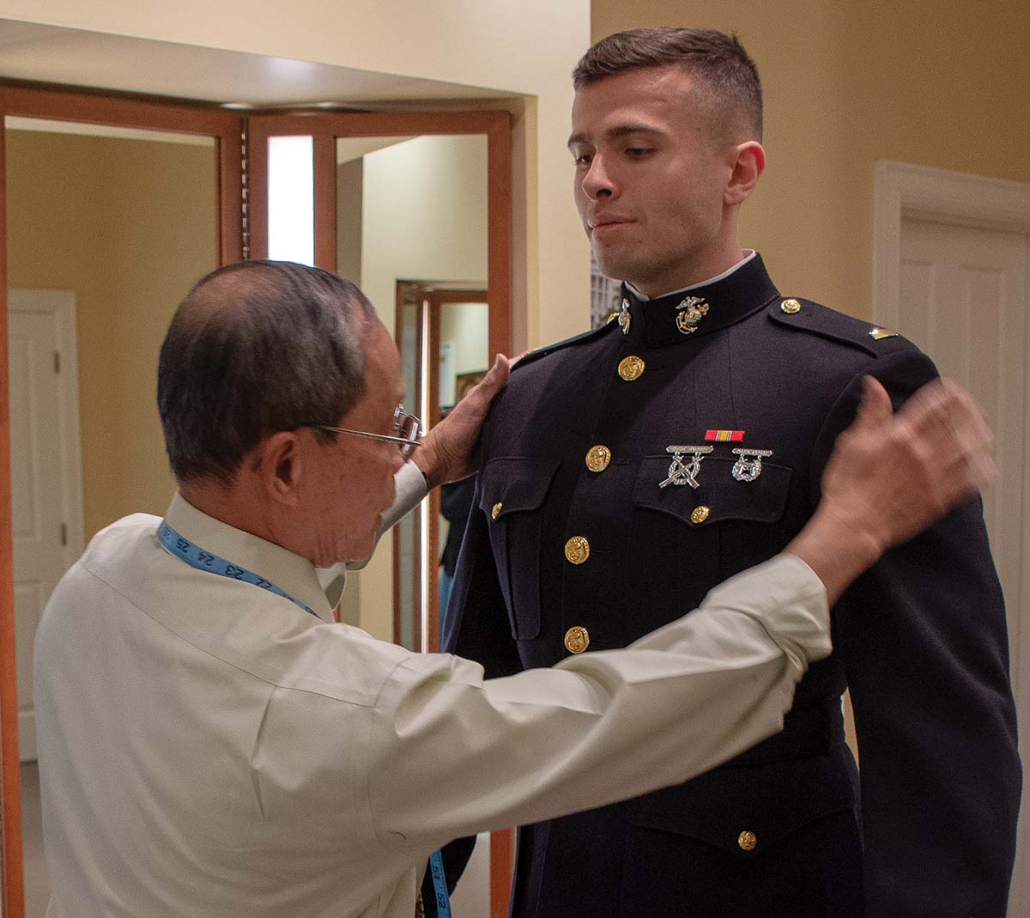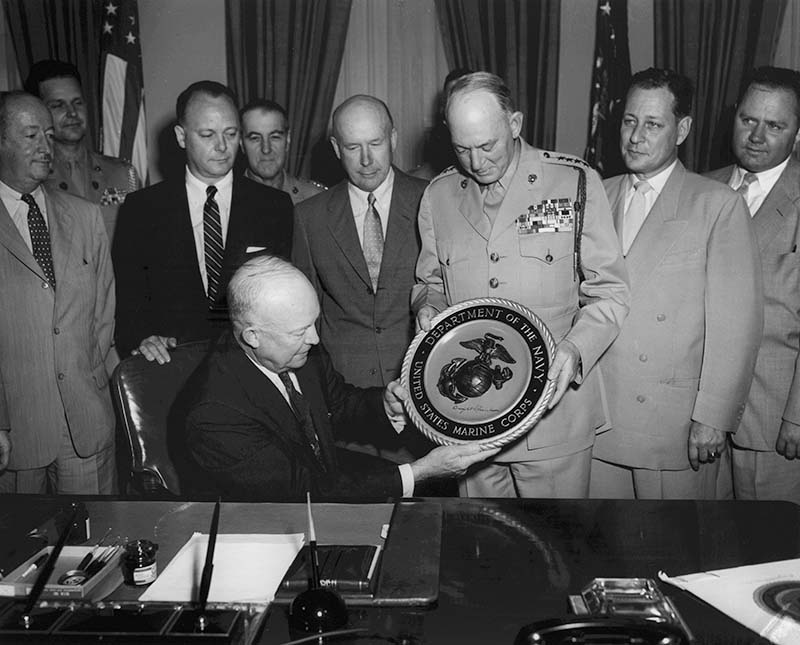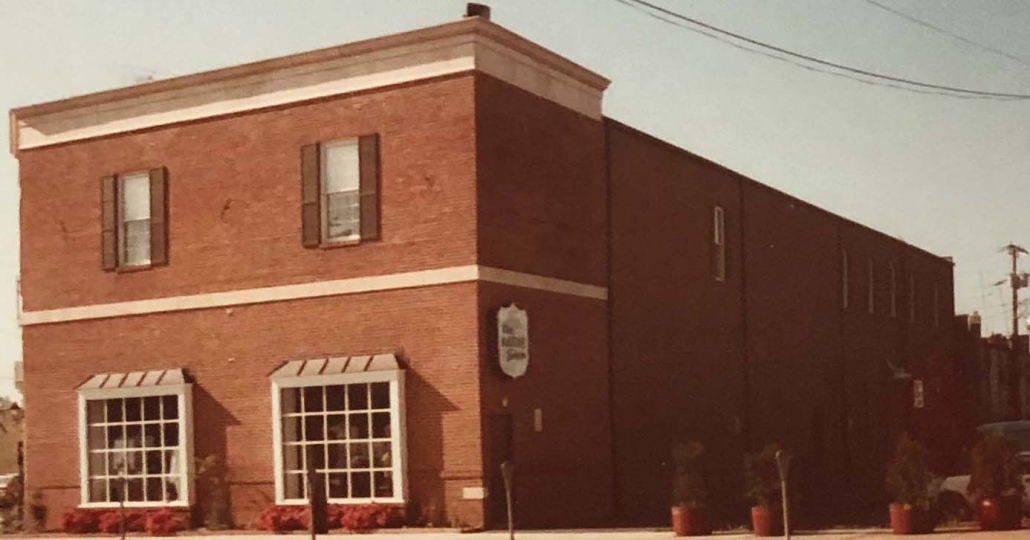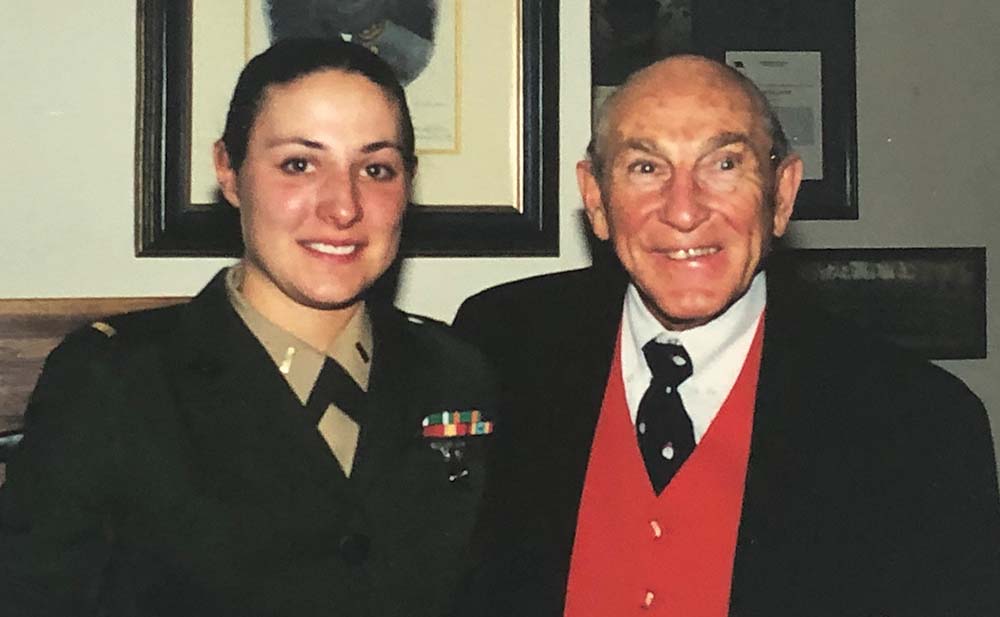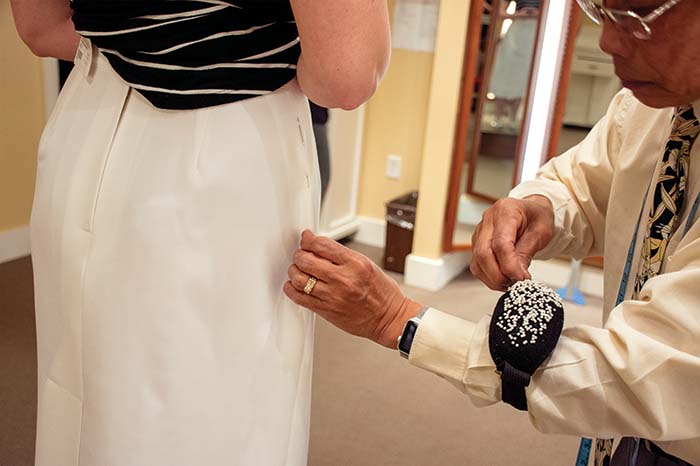It’s a unique business with a remarkable story that all began after Maj Elms, a mustang Marine officer and World War II veteran who fought at Guadalcanal and Bougainville, retired from the Corps in 1961. He had become an expert on Marine Corps uniforms and insignia over the last 13 years of his active-duty career by serving as executive secretary of the Marine Corps Uniform Board, which was established to regulate and improve the quality of all uniforms and insignia for the Marine Corps.
“There were many companies manufacturing insignia items that varied from vendor to vendor,” said Elms’ daughter, Pamela Scott, of the standardization issues that plagued the Corps in the late 1940s, when the uniform board was established. “He was also instrumental in standardizing the design of all insignia to meet strict specifications,” she said of her father’s accomplishments.
While serving on the uniform board under General Lemuel C. Shepherd Jr., 20th Commandant of the Marine Corps, Elms would leave a permanent mark on the Corps by designing the official seal of the Marine Corps, which was approved by President Dwight D. Eisenhower in June 1954.
In 1959, Elms was responsible for the redesign and standardization of the Marine Corps emblem worn on uniform items, both enlisted and officer, the product of which is still used today. With unprecedented experience in the area of Marine Corps uniforms, opening a uniform shop post-retirement seemed a natural progression—but he didn’t rush into it.
According to Scott, the newly retired major first spent an entire year evaluating the quality of available uniforms and the service provided to Marines by private vendors. Elms concluded that the current offerings were inadequate for all Marines, but especially for newly commissioned second lieutenants. The MARINE Shop, she said, was created to fill the “quality and service void” that Elms perceived, and the town of Quantico, or “Q-town,” was an optimal location due to the fact that Marines tend to return to Marine Corps Base Quantico often throughout their careers earning it the nickname “Crossroads of the Marine Corps.” Its proximity to Officer Candidates School, The Basic School, Marine Corps University, Headquarters Marine Corps and the United States Naval Academy made it an obvious choice.
Elms designed a store logo that incorporated the Eagle, Globe and Anchor, which he submitted to the Marine Corps for approval. The shop’s original storefront, located at the opposite end of Potomac Avenue from where it currently stands, included a tailor shop on the premises. Elms hired tailors from across the globe, primarily from countries like Hong Kong that had longstanding reputations for producing the finest tailors in the world.
Within the first few years, Elms designed a more fitted look for the dress blue uniform, which was approved by the Corps and became the standard. The Hirsch Tyler Company of Philadelphia, which at the time was The MARINE Shop’s primary uniform manufacturer, initially owned the store while Elms served as its vice president and general manager. The MARINE Shop quickly became known for offering the highest-quality uniforms and tailoring available to Marines.
“Eventually, because of Hirsch Tyler’s expansion into other markets, Harry purchased the business from the company,” said Scott.


